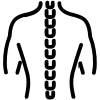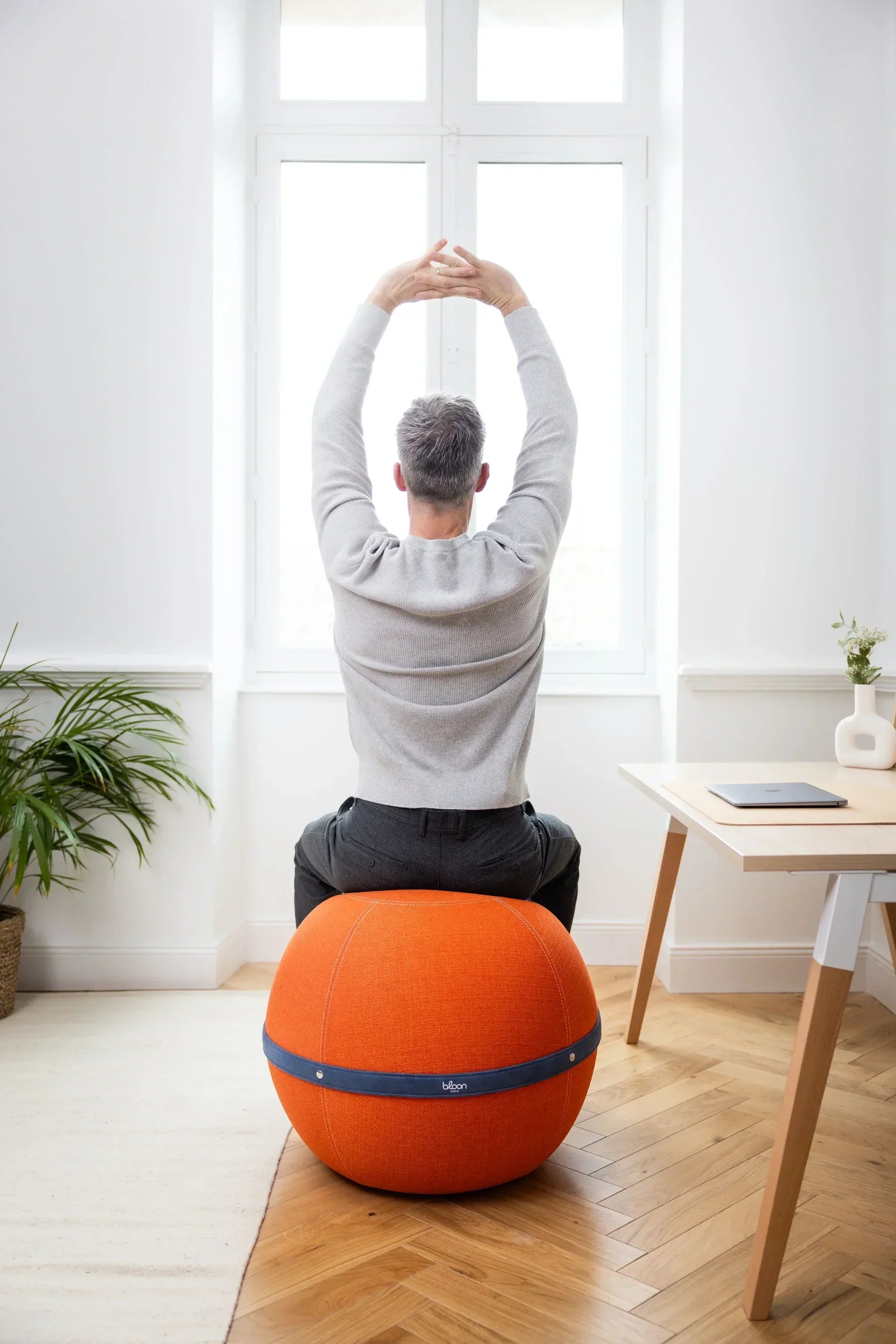Your job shouldn’t stand between you and living a healthy, active life. An ergonomic workspace can make all the difference between a day that drains you and a day that energizes you. Among other issues, sitting for long hours at a desk can lead to painful back problems that zap your focus—and your productivity along with it. The solution? Dynamic sitting: an innovative way of sitting that keeps you active instead of immobile.
What Is Dynamic Sitting?
Dynamic sitting is a way of sitting that keeps your body moving and your muscles engaged. The aim of dynamic sitting is to improve posture, strengthen stabilizing muscles (like those in your core), and reduce the tension and pain that often result from going for hours without moving.
The Benefits of Dynamic Sitting
Better Posture
Dynamic sitting keeps you constantly moving, since you engage in small “micromovements” that work the stabilizing muscles in your core. These muscles help keep your posture straight and your spine aligned. Because of this, dynamic sitting makes you less likely to sit with poor posture.
Less Back Pain
4 out of 5 people will suffer from back pain at least once in their life—making back pain a real public health concern. Sitting for long hours without moving is a common cause of lower back pain. Dynamic sitting, on the other hand, helps reduce pressure on the spinal column and lower back muscles by strengthening the back, abdominal, and pelvic muscles. Having stronger back and core muscles can reduce back pain significantly.

Increased Productivity
Beyond improving posture and reducing back pain, dynamic sitting stimulates blood circulation, which means more oxygen flows to your muscles and brain. More oxygen in the brain translates to better focus, making you more energized and productive throughout the day.
Preventing Musculoskeletal Disorders
Repetitive movements and poor posture are two common causes of musculoskeletal disorders. By encouraging movement, engaging the muscles, and preventing poor posture, dynamic sitting helps ward off these health problems. Staying active lowers your risk of developing musculoskeletal disorders.
Reducing Stress
Dynamic sitting, by keeping you active through micromovements, promotes the release of endorphins in your body. These hormones can improve your mood and reduce your stress levels. Even more, the combination of better posture and less pain helps you feel more relaxed and at ease, giving your mental health a boost.
How to Choose a Dynamic Chair
Ergonomics
If it isn’t ergonomic, it isn’t a dynamic chair! Ergonomics is an essential component of a dynamic chair. You can rest assured that yours will be specially designed to protect your back and promote better posture. A good dynamic chair should support the natural curve of your spine and allow you to continually engage in micromovements.
Adjustability
Your dynamic chair should be comfortable for your! To make sure the one you get can be adapted to your body size and desk height, choose a chair that lets you easily adjust the height.
Comfort
It’s important that your dynamic chair be long-lasting. Choose a chair that is made with high-quality materials and has an adequate amount of padding. Don’t think only of how comfortable it is now, but how comfortable it will be in the future.
Mobility
Your dynamic chair shouldn’t restrict your movement. Look for one with an unstable base or rocker, since these let you move more naturally and improve your circulation.
Durability
Your dynamic chair should be built to last. Choose a chair that’s high-quality and made of durable materials. Checking both customer reviews and the warranties that the manufacturer offers can help you make the best choice for you.
Types of Dynamic Chairs
Ball Seats
Stability balls, like the Bloon ball seat, are excellent choices. They encourage dynamic sitting while strengthening your core muscles and helping you sit with a posture that’s healthy for your back.
Sitting on an exercice ball has the added advantage of keeping you more active in the office, since you can do stretches and exercises on them.

To learn more about the benefits of the Bloon ball seat, check out our article.
Ergonomic Stools
Ergonomic stools’ backless design requires you to use your core muscles to stay in place—a perfect example of dynamic sitting.
Kneeling Chairs
Kneeling chairs are a very popular dynamic sitting option. When you sit on a kneeling chair, your bodyweight is distributed between your knees and buttocks. This position reduces pressure on the lower back and supports your spine’s natural curve.
Rocking Office Chairs
Rocking chairs (of the professional variety!) let you stay in constant motion. Their back-and-forth movements help strengthen your core muscles and improve your posture.
Perched Chairs
Perched chairs are dynamic chairs made to be used in a half-standing position. They let you stay active by alternating between sitting and standing, which reduces pressure on the spine and improves circulation.
Chairs With Unstable Bases
When you sit on a chair with an unstable base, you have to engage in constant micromovements to stay balanced. This type of dynamic chair keeps you active while reducing pain and tension.
Dynamic sitting is indispensable to an ergonomic workspace. It protects your health in the long term by improving your posture, reducing your stress, and making you more focused and productive thanks to improved circulation and oxygen flow. When choosing your dynamic chair, make sure to look for one that is ergonomic, comfortable, durable, and mobile.











